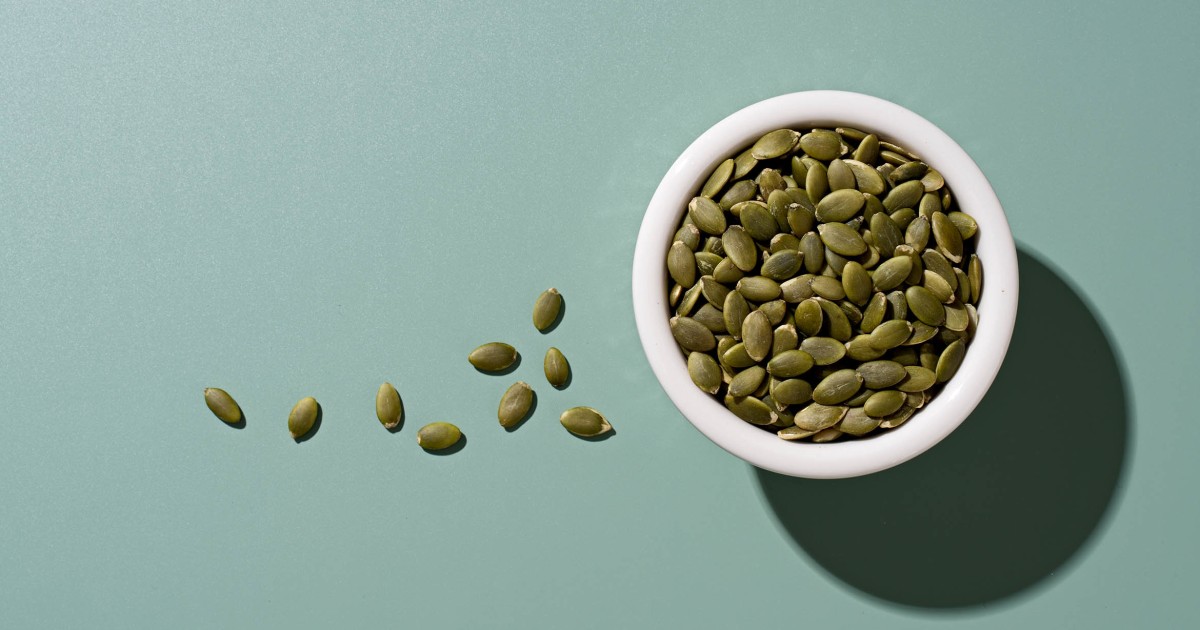
Magnesium is an essential mineral that supports hundreds of enzyme reactions that keep our body functioning properly. If you’re not getting enough of this nutrient — which many Americans don’t — you can start by adding magnesium-rich foods to your diet.
“Magnesium is what we call a ‘co-factor’ in over 300 different biological processes,” NBC News medical contributor Dr. Natalie Azar told TODAY in a segment aired May 13.
It’s involved in energy production, protein synthesis, and muscle and nerve function, said Azar. “Magnesium also controls blood glucose, helps to regulate blood pressure, and it’s critically important for bone development.” It plays a role in sleep, exercise, and even mood, too.
Magnesium is found naturally in many foods, added to some foods, available as a supplement and added to medications, Azar explained.
The recommended daily intake for magnesium is 400–420 milligrams for men and 310–320 milligrams for women, per the National Institutes of Health’s Office of Dietary Supplements.
Most people can get enough magnesium by eating a varied diet full of plant-based foods like legumes, vegetables, seeds and whole grains. However, if you eat the standard American diet, which is higher in processed foods, it can be hard to get enough.
“Close to 50% of Americans don’t get the recommended daily amount,” says Azar. Magnesium deficiencies are uncommon in healthy people, but risk factors include gastrointestinal disorders such as Crohn’s, Type 2 diabetes and alcohol use, says Azar.
“If you are generally healthy and eat a well balanced diet, you’re not likely to have symptomatic magnesium deficiency,” Azar added.
Fortunately, it’s easy to get more magnesium by tweaking your diet. Many experts recommend a “food-first” strategy rather than taking magnesium supplements, which most people do not need, said Azar.
No. 1 snack with most magnesium
“There are so many delicious foods that are loaded with magnesium,” registered dietitian and TODAY contributor Joy Bauer said in the May 13 segment. Seeds are some of the best sources, and one stands out in particular.
“Pumpkin seeds are the superstar when it comes to magnesium,” said Bauer. Pumpkin seeds (and the shell-less variety, pepitas) are nutrition powerhouses.
Pumpkin seeds nutrition
A 1-ounce serving of roasted pumpkin seeds provides:
- Calories: 163
- Protein: 8.5 grams
- Fat: 14 grams
- Carbohydrates: 4 grams
- Fiber: 2 grams
- Magnesium: 156 milligrams
One serving of pumpkin seeds provides nearly 40% of the daily value for magnesium, plus protein, healthy fats, fiber and micronutrients, which benefit your health in many ways.
Pumpkin seed benefits
Pumpkin seeds are one of the healthiest seeds to eat. The impressive magnesium content means pumpkin seeds can help lower blood pressure, support strong bones, and promote sleep.
The seeds are a top source of plant-based protein and contain all nine essential amino acids. Plus, they’re considered an “allergy friendly protein” for people who need to avoid whey, soy or nut-based products, according to TODAY nutrition editor Natalie Rizzo.
Pumpkin seeds are loaded with good-for-you unsaturated fats, which support heart health by lowering bad (LDL) cholesterol. They’re also good source of anti-inflammatory omega-3 fatty acids.
The crunchy seeds are rich in zinc — 1 ounce provides 18% the daily value — which makes them an immune-boosting snack, and they’re a good source of plant-based iron, says Rizzo. In addition, they provide beneficial antioxidants and plant compounds.
Eating pumpkin seeds has been linked to improved metabolic health and cardiovascular health, TODAY.com previously reported.
How to eat more pumpkin seeds
Pumpkin seeds are a convenient snack that can be enjoyed on their own, raw or roasted, salted or unsalted.
You can roast pumpkin seeds at home, which allows you to customize the seasonings. On Halloween, make sure to save the leftover seeds from pumpkin carving.
Pumpkin seeds can also be added as a garnish to yogurt, soups, and salads, says Bauer. You can also blend pumpkin seeds into a seed butter, or use them in smoothies and sauces.
If you’re looking to eat more pumpkin seeds, try these recipes:
